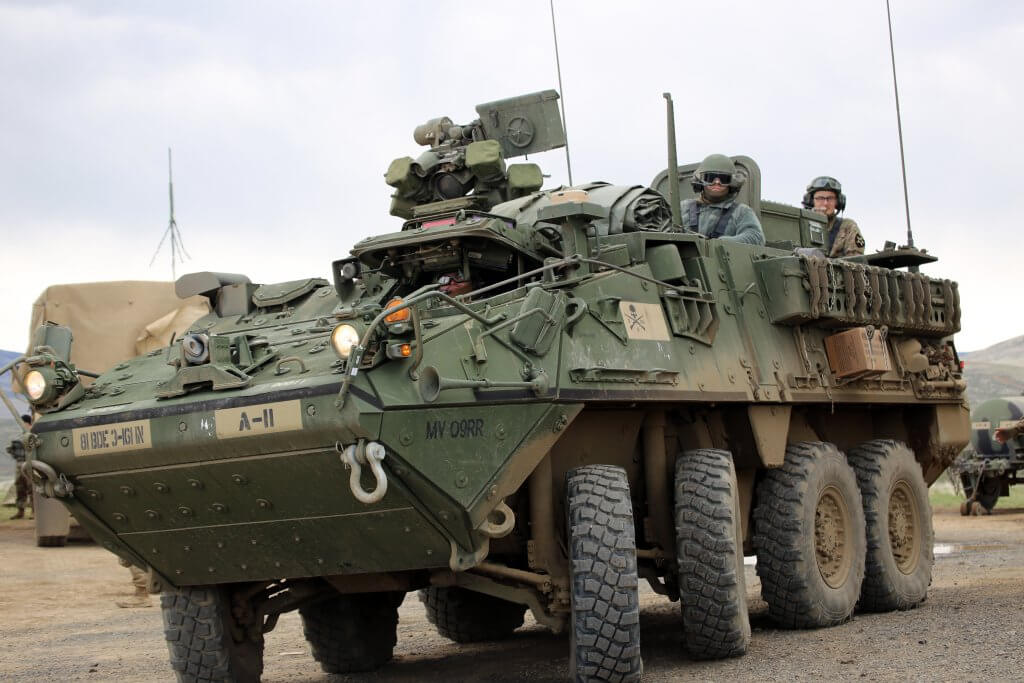For most of the United States, summer’s arrival means a three-month stretch of barbecues and beaches, sunburn, sand, fireworks and Frisbee-tossing. It means the same for the nation’s National Guard members — only they have a required commitment to fulfill through Annual Training.
And unlike Grandma’s potato salad, AT changes every year.
“Training time is precious… That’s why the Guard uses many unique training methods,” reads the National Guard’s official website. “From ‘real-life’ training exercises…to high-tech simulation training and distributed learning, the…National Guard…give[s] its members access to high-quality training.”
Given that the National Guard is comprised of both Army and Air units in each of the 50 states and four territories, that translates into a wide variety of AT activities, locations and focuses.
Dive in, then, to a sampling of how other units are doing AT in 2019.
Helping the home front
While some of New Mexico’s 2,800 Army and 900 Air National Guard members have already completed AT, several companies, battalions, brigades and a wing still have theirs to look forward to. When “The Land of Enchantment” maps their units’ 2019 AT locations, it sticks pins in Colorado, Iowa, Indiana, Michigan, Alabama, Pennsylvania and even Germany.
However, some are sticking close to home, such as the 515th Combat Sustainment Support Battalion and 920th Engineer Company. In July and August, each will conduct AT at Camp Navajo, Arizona, to provide horizontal construction support to the Navajo Nation.
“Sometimes Annual Training benefits the civilian community directly, as with our engineers providing horizontal construction support — namely road improvement — to the Navajo Nation,” said Douglas Mallary, a public affairs specialist with the New Mexico National Guard. “Annual Training also benefits the civilian community indirectly by ensuring our units are trained and ready to respond to state emergencies when so ordered by the governor of New Mexico.”
A neighbor to the northwest is similarly remaining close, too. While AT has previously taken place in far-flung locales like Korea, Oman and Europe, Oregon’s 7,800 combined Guard members will be conducting this year’s training around the Beaver State, as well as in Washington and Idaho.
Financially, Director of Public Affairs Stephen Bomar at the Oregon Military Department points out, AT is a boom to the state.
“Annual training ensures mission-readiness and also provides the economy of Oregon more than $350 million annually through pay and construction, while providing mission capabilities to support state and nation,” Bomar said.
Forward thinking
For some units, AT isn’t simply a perennial get-together; it’s a critical step to upcoming deployments, as with Washington State’s National Guard. Four thousand Washingtonian men and women will participate in Exercise Bayonet Focus this year at the Yakima Training Center.
The field training exercise, says State Public Affairs Officer Joseph Siemandel, “is a requirement before the 81st Brigade’s National Training Center rotation in June 2020 to prepare for a possible overseas deployment” in 2021.
“Our Guardsmen are trained to be leaders; this [AT] tests their ability to be leaders on the battlefield,” he said.
And though the battlefield is a constant factor in military training, it is not the only consideration. Often, the Guardsman’s civilian life plays a critical role, too.
“We feel the training we provide…helps make them better in their civilian job as well as [in their] communities,” said William Prokopyk, an assistant public information officer for the North Dakota National Guard. Though some of his state’s units are training at home or in nearby states, one brigade is headed to Europe.
The state of Iowa believes so strongly in the military-civilian career connection that they organize transportation for local employers to observe training activities.
“We recognize it can be a hardship to have employees gone, but we believe the opportunity to be part of military training makes them better employees,” said Col. Michael Wunn, a spokesman for the Iowa National Guard. At least three-quarters of the Hawkeye State’s combined 8,800 National Guard members, Wunn points out, have civilian careers and heavily benefit from outside training.
“The leadership and supervisory skills you bring back when you’ve been responsible for a company full of soldiers — you take those back and use them in your civilian career. It’s a direct benefit for both military and civilian [sectors],” he said.
And especially for America’s spread-out territories, those skills can sometimes be the difference between life and death, panic and organized chaos.
“Being so far away from the mainland, our troops train for any contingency here,” said Luis Orengo Roman, chief public affairs for the Puerto Rico National Guard. “We have to rely on ourselves for the first couple days after any island weather front. Once everything’s set down, the first face [Puerto Ricans] want to see is the Guard, supporting and helping.”
The completely bilingual 8,400-member guard will hone their AT skills both on the island and around the mainland this summer.
No matter the size, location or language, each guard unit not only trains and refines at each AT, New Mexico’s Mallary says, but gels and enjoys, too.
“Unit members form lasting friendships with their National Guard colleagues, but sometimes only see one another during drills and Annual Training, which provide camaraderie,” he said.
Friendship and fun, trips and teamwork, oceans and outings — perhaps, in some ways, AT is as all-American as the very ones the National Guard is working to protect and assist.

